American Robin Facts
The American robin (Turdus migratorius) occurs throughout most of the continental United States and Canada. This is a migratory songbird of the wider thrush family, Muscicapidae. American robins are common garden birds over much of North America, and their distinctive foraging behavior is well known.
During the breeding season and winters in the southern half of the United States and in Mexico and Central America, due to the expansion of lawns and other open habitats, the robin’s nesting range has grown in recent years. American Robin’s body size is approximately 23 to 28 cm long, with an average weight of 77 g.
However, the female robin is about 59 to 91 g. This is commonly a friendly songbird, very comfortable around people. Sometimes I even get close to dogs while playing in the yard, who are also fast and strong in flight. Male robins are more aggressive than females and like to spend the most time in interactions with fertilization mates.
American Robin Bird
The sexes are similar in size and appearance. Their size varies slightly geographically. The smallest robins are found in the eastern United States and along the Pacific coast, and the largest ones occur in the Rocky Mountains, northern Great Plains, and northern deserts.
The size of robins tends to increase with latitude in eastern North America but does not in western North America. Fledglings attain adult size at approximately 6 weeks of age. Male Robin’s head differs from black to grey, with white eye arcs and white supercilia. But the throat is white with black streaks, and the undertail coverts and belly are white.
The bird has a brown back and a reddish-orange breast, changing from a rich red maroon to peachy orange. The bill is mostly yellow with a patchily dark tip, the dusky area is becoming more widespread in winter, and the legs and feet are brownish.
Habitats
Access to freshwater, protected nesting sites, and productive foraging areas are important requirements for breeding robins. Breeding habitats include moist forests, swamps, open woodlands, orchards, parks, and lawns. Robins forage on the ground in open areas, along habitat edges, or on the edges of streams.
Moreover, they also forage above ground in shrubs and within the lower branches of trees. The main threat to juvenile robins and eggs is preyed upon by snakes, squirrels, and other birds, i.e., blue jays, Steller’s Jay, scrub jays, grackles, American crows, and common ravens.
American Robin Nest
The robins mostly nest in wooded areas and are usually near some type of opening, such as the forest edge or a tree fall gap. During the non-breeding season, they prefer moist woods or fruit-bearing trees and shrubs. In the fall season, flocks of migratory robins are often found along forest edges or clearings where fruits are most plentiful.
American Robin Diet
The robin’s forage is done by hopping along the ground in search of ground-dwelling invertebrates and by searching for fruit and foliage-dwelling insects in shrubs and low tree branches. In the months preceding and during the breeding season, robins feed mainly on invertebrates and on some fruits.
However, during the remainder of the year, their diet consists primarily of fruits. Robins eat a wide variety of both plants and animals. The Robins don’t like to eat many seeds, so don’t try to entice them with whole peanuts, mixed bird seeds, or Nyjer seeds.
What do American Robins eat?
Commonly eaten fruits include plums, dogwood, sumac, hackberries, blackberries, cherries, green briers, raspberries, and juniper. The common invertebrates include beetles, caterpillars, moths, grasshoppers, spiders, millipedes, and earthworms.
The seasonal changes in the proportion of plants and invertebrates consumed by robins in three different sections of the United States. The average occurrence of fruits of various plant families in the stomachs of robins by month for these sections. The occurrence of fruits of various plant families in more specific areas of the United States.
There are no differences between the sexes in the proportion of types of invertebrates and fruits eaten. Very young robins (up to at least 35 days of age) feed almost entirely on insects and other invertebrates. However, older juveniles tend to eat a higher proportion of fruit and easy-to-capture prey than adults.
American Robins often show food preferences: a population in central New York seemed to prefer northern arrowwood and spicebush fruits over most other plants. Moreover, in Illinois, a group ate predominantly frost grapes and Virginia creeper in the late summer and fall.
During seasons when fruits dominate the diet, robins may need to consume quantities greater than their body weight to meet their metabolic needs each day. Robins, as well as other fruit-eating birds, exhibit low digestive efficiency for fruits. It is estimated that the metabolize energy coefficient, the proportion of food energy that is assimilated for rats eating a mixed fruit diet, is only 55 percent.
Perhaps because of the low retention time of the digested matter in the gut. The short retention time might be an adaptation to eating fruit because large quantities of the fruit must be processed to obtain an adequate protein intake. In contrast, when eating insects, robins, as well as other bird species, exhibit a higher digestive efficiency of approximately 70 percent.
Moreover, the energy content of insects tends to be higher than that of most fruits, particularly on a wet weight basis. Thus, during the spring, when robins are consuming insects, they should consume a smaller amount relative to their body weight than when eating fruits.
Molt
Post-juvenile and post-breeding molts occur from late July to October. During this molt, robins are consuming largely fruits and other plant materials, which contain limited proteins. This may contribute to higher fruit consumption rates at this time. During the pre-breeding molt, robins feed primarily on insects and other invertebrates.
Migration of American Robin
Most robins nest in the northern United States and Canada and winter in the Gulf Coast States and the Carolinas. Wintering robins are most abundant between 30 and 35 degrees N latitude. Robin flocks migrate during the day, most northern robins leave their breeding grounds from September to November and return between February and April.
American Robin Song / Call
American Robin has the sweet familiar sound of spring, a string of clear whistles with a brief pause, and often repeated syllables, like cheer up, cheerily, cheer up, cheerily. The male bird sings when he is in the mood to attract females. The song varies with the time of day and habitually sings from a high perch in a tree.
This bird sang before and after the storms and used different calls to communicate specific information to others. The Robin also alarms in a different call, when a ground predator reaches, or their nest is being directly threatened.
Breeding activities and social organization
The onset of the breeding season is later at higher latitudes, approximately 3 days for each additional degree in the east and altitudes. But mating and egg-laying generally occur in April or May. Males arrive on the breeding grounds before females establish territories.
The females pair with established males, usually for the duration of the breeding season. The female primarily builds the nest out of mud, dried grass, weedy stems, and other materials, constructing it on horizontal limbs, tree-branch crotches, within shrubs, or on any one of several man-made structures with horizontal surfaces.
Eggs of American Robin
First clutches usually contain 3 to 4 eggs; later clutches tend to contain fewer eggs. The female does all the incubating, which continues for 10 to 14 days following the laying of the second egg.
American Robin Nestlings
Both males and females feed the nestlings. Following fledgling, the brood often divides, with the male and female each feeding half of the fledglings for another 2 weeks. Females may start another brood before the current one is independent, leaving the male to feed all the fledglings. After reaching individuality, juveniles often form foraging flocks in areas of high food availability.
Early in the breeding season, robins often roost communally. Males can continue to use these roosts throughout the breeding season. Whereas female birds stop once they begin incubating eggs. As fall approaches and their diet turns more toward fruits, robins in many areas begin to roost communally again and may join other species, such as common grackles and European starlings, in large roosts.
American Robin Nesting Habits
During the breeding season, male robins establish breeding territories, which the female helps to defend against other robins. Nonetheless, the territories of different pairs often overlap where neither pair can establish dominance. Most foraging during the breeding season is confined to the territory, but adults sometimes leave to forage in more productive areas that are shared with other individuals.
In some prime nesting areas (e.g., dense coniferous forest), where robin densities are high, territories are small, and the birds might often forage elsewhere,. Adult robins often return to the same territory in succeeding years. During the nonbreeding roosting period, robins are likely to return to the same foraging sites for many weeks and join roosts within one to three kilometers of these foraging areas.
Nesting population density varies with habitat quality. Densely forested areas that provide well-protected nest sites have been found to support high densities of nesting robins. Therefore, the relatively small territories found in these areas might not be used as much for foraging as those containing open areas.
In the non-breeding season, robins often join single- or mixed-species roosts that can include tens of thousands of birds. Wintering robins are most common in pine or oak-pine communities of the southeastern and south-central United States and decrease in abundance in drier, less forested areas westward.
Robins first attempt to breed the year after they hatch, and they will raise multiple broods in a season. Predation is often a major source of mortality for both eggs and nestlings. Approximately half of the adult birds survive from year to year. The average longevity of a robin that survives to its first January is 1.3 to 1.4 years.
Similar Species
The wood thrush (Hylocichlamustelina), which is smaller than the robin (18 cm), co-occurs with the robin in some woodland habitats but is only present in the eastern United States. This species nests primarily in the interiors of mature forests and has been decreasing in abundance over the past decade as forested habitats in North America become increasingly fragmented. This species is also primarily a summer resident, wintering in Florida and the neotropics.
The hermit thrush (Catharusguttatus) is found in coniferous and mixed woodlands at northerly latitudes or high elevations and winters primarily in the southern half of the United States. This species is also significantly smaller (15 cm) than the robin.
Swainson’s thrush (Catharusustulatus) is present in the western and northeastern United States during the summer months, wintering in the neotropics. It is also smaller than the robin (16 cm).
The varied thrush (Ixoreus naevius) occurs in moist coniferous forests of the Pacific Northwest. This bird is similar in size (21 cm) to the robin.
Moreover, thrushes are common, medium-sized birds that eat worms, insects, and fruit. They live in a variety of habitats, including woodlands, swamps, suburbs, and parks. Most thrushes build nests of mud and vegetation on the ground or in the crotches of trees or shrubs; bluebirds nest in holes in trees and posts or in nest boxes.
This group forages primarily on the ground and in low vegetation by probing and gleaning. Some thrushes are nontropical migrants, while others reside year-round in North America. Thrushes range in size from the eastern and western bluebirds (18 cm from bill tip to tail tip) to the American robin (23 cm to 25 cm). Male and female plumage is similar in most thrushes, although, in some species, such as the bluebirds, the males are more brightly colored.

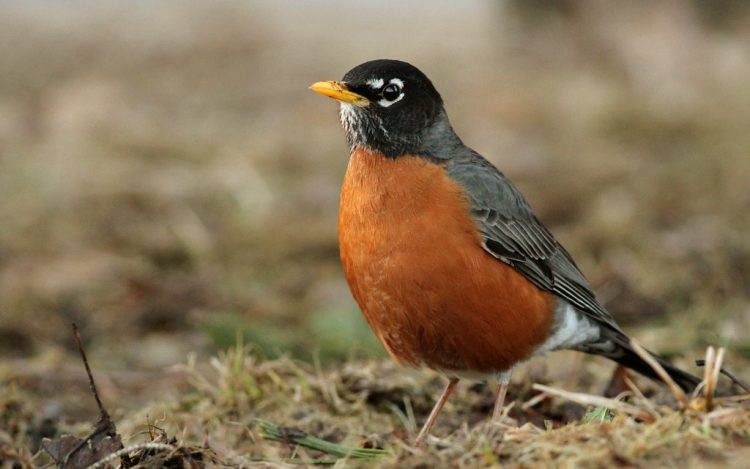
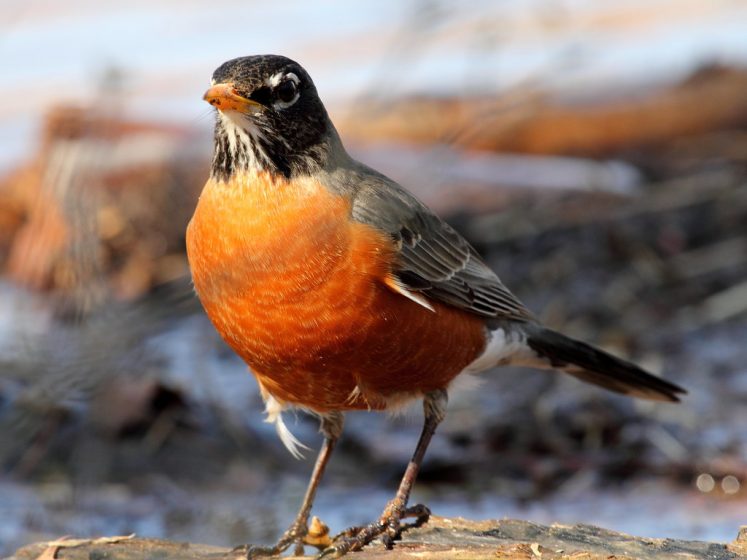
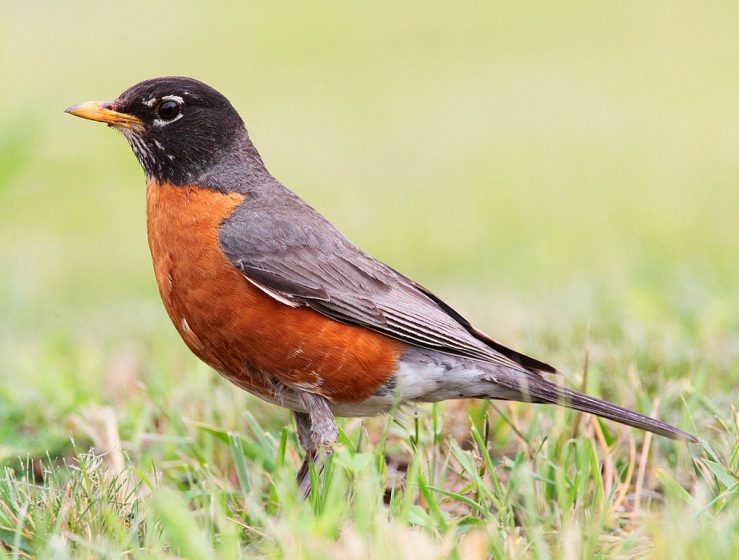
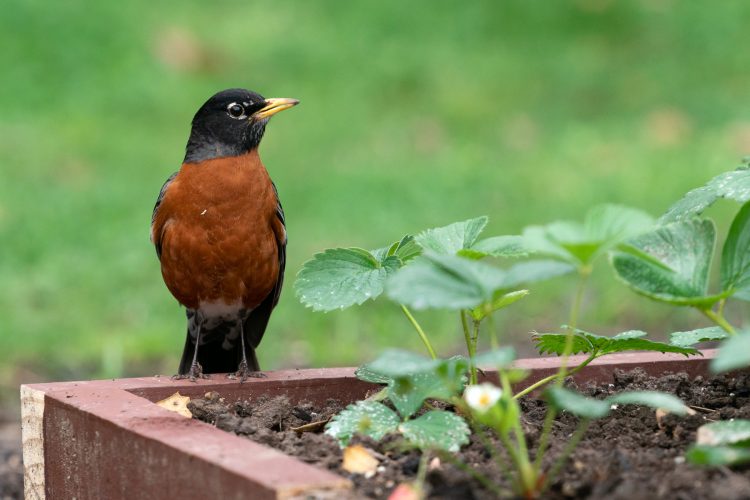


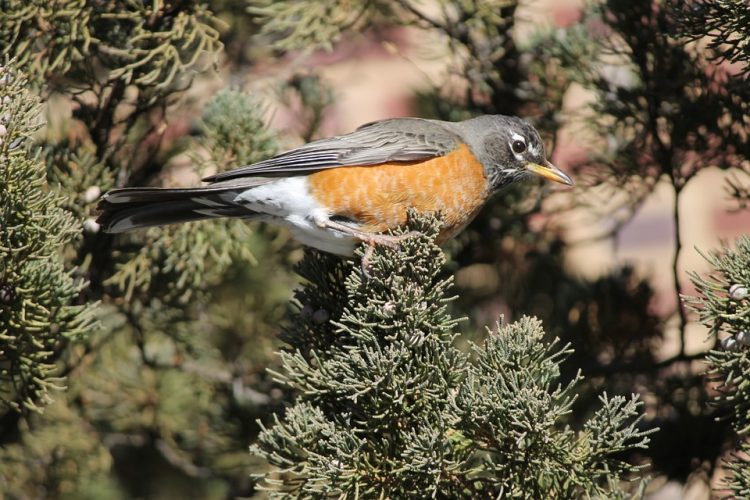

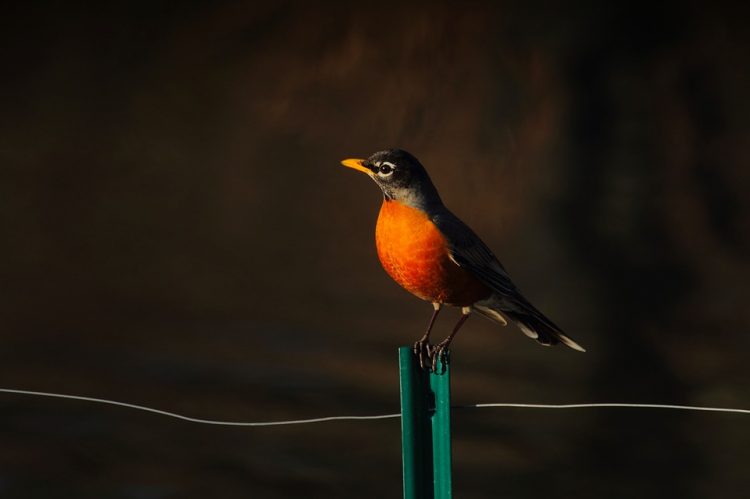
Read More: The Lesser Goldfinch (Spinus psaltria) / The Himalayan Cutia / The fire-tailed myzornis / Pando – The One Tree Forest / Great Blue Heron
Affiliates Links:
-
How One Woman Discovered the Female Fat-Loss Code Missed by Modern Medicine And Lost 84lbs Using a Simple 2-Step Ritual That 100% Guarantees Shocking Daily Weight Loss
-
60 Seconds Habit! That Reversed Type 2 Diabetes and Melted 56 lbs of Fat
-
Boost Your Energy, Immune System, Sexual Function, Strength & Athletic Performance
-
Diabetes Remedy # 1 Mega Offer for 2019







